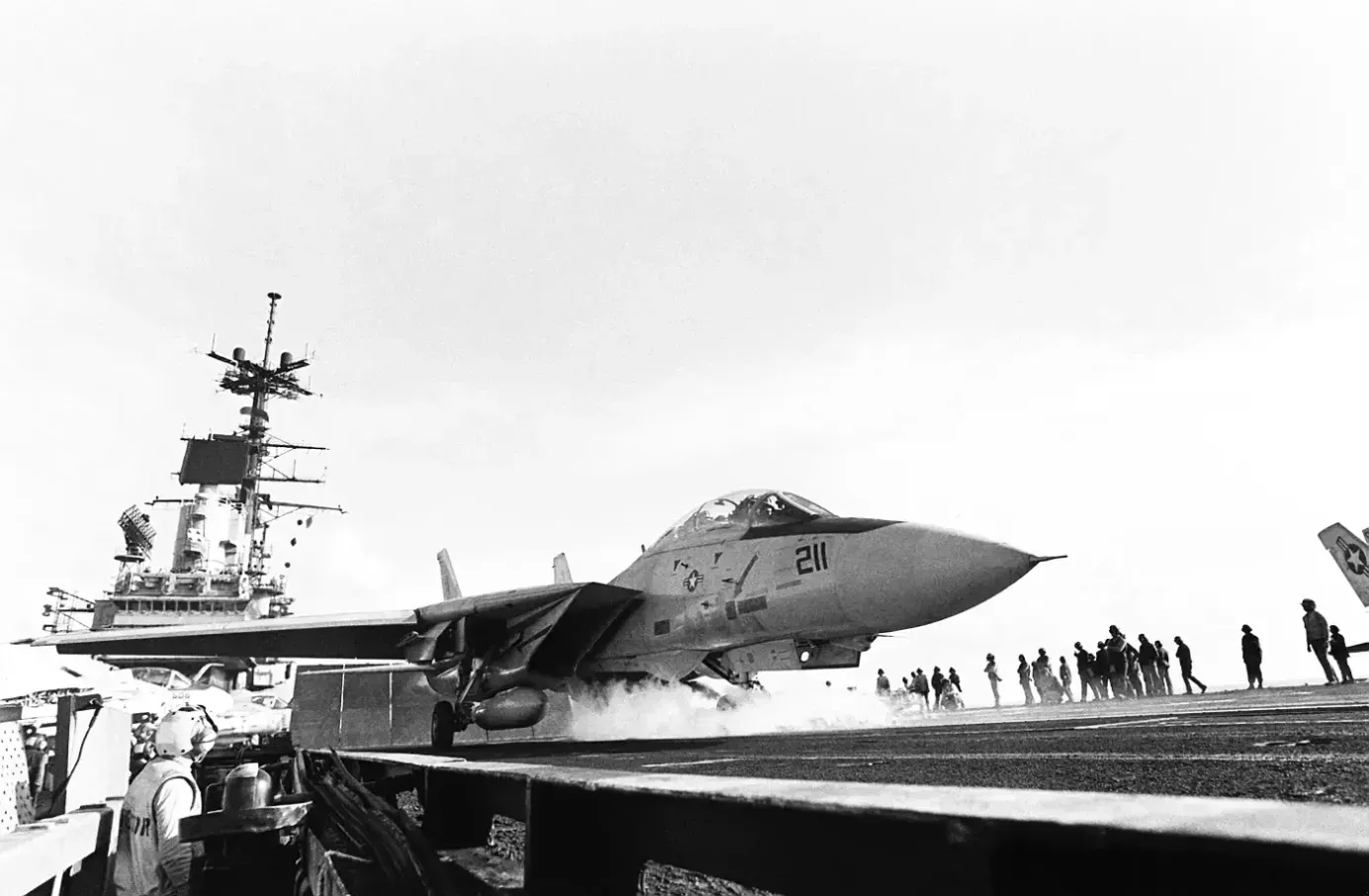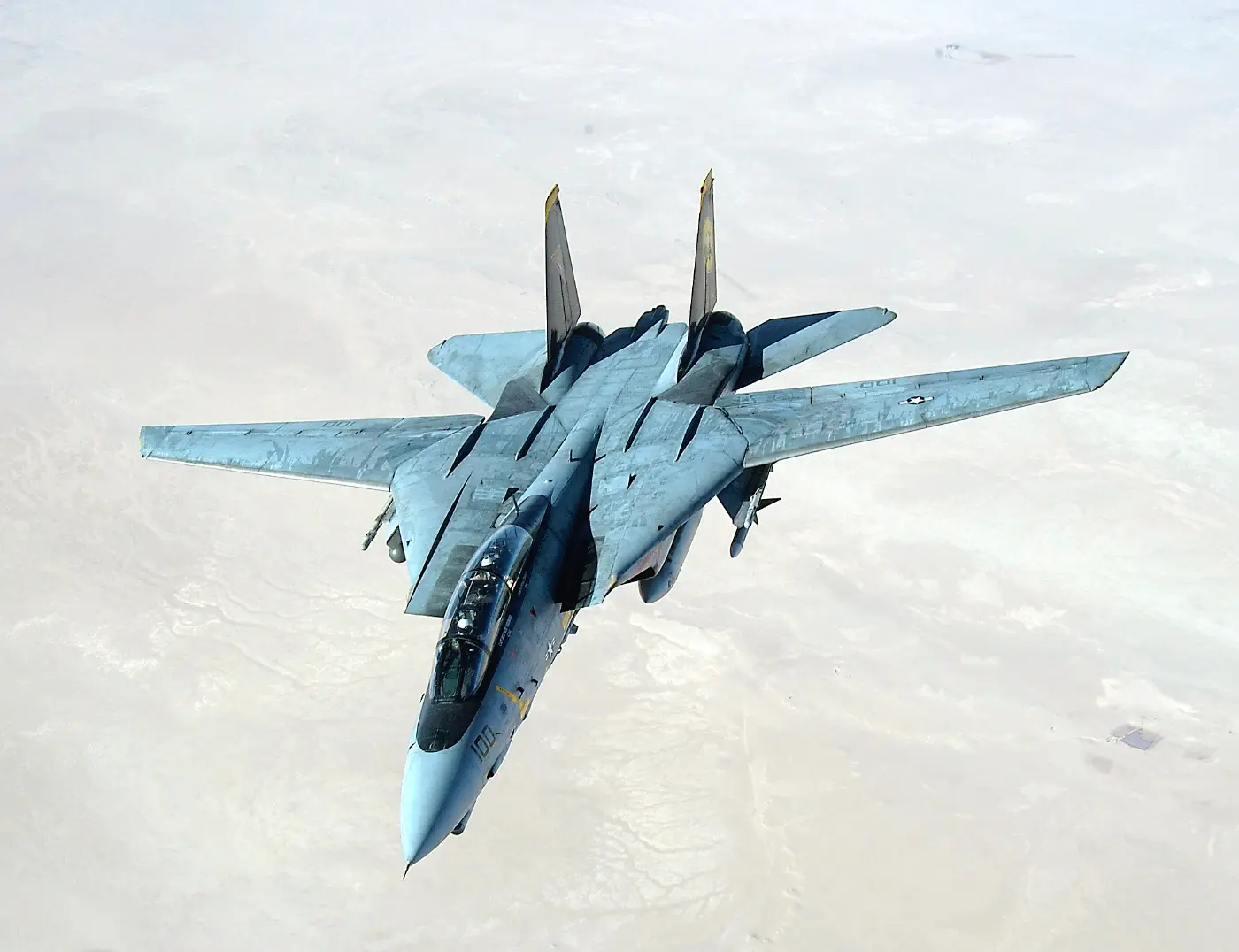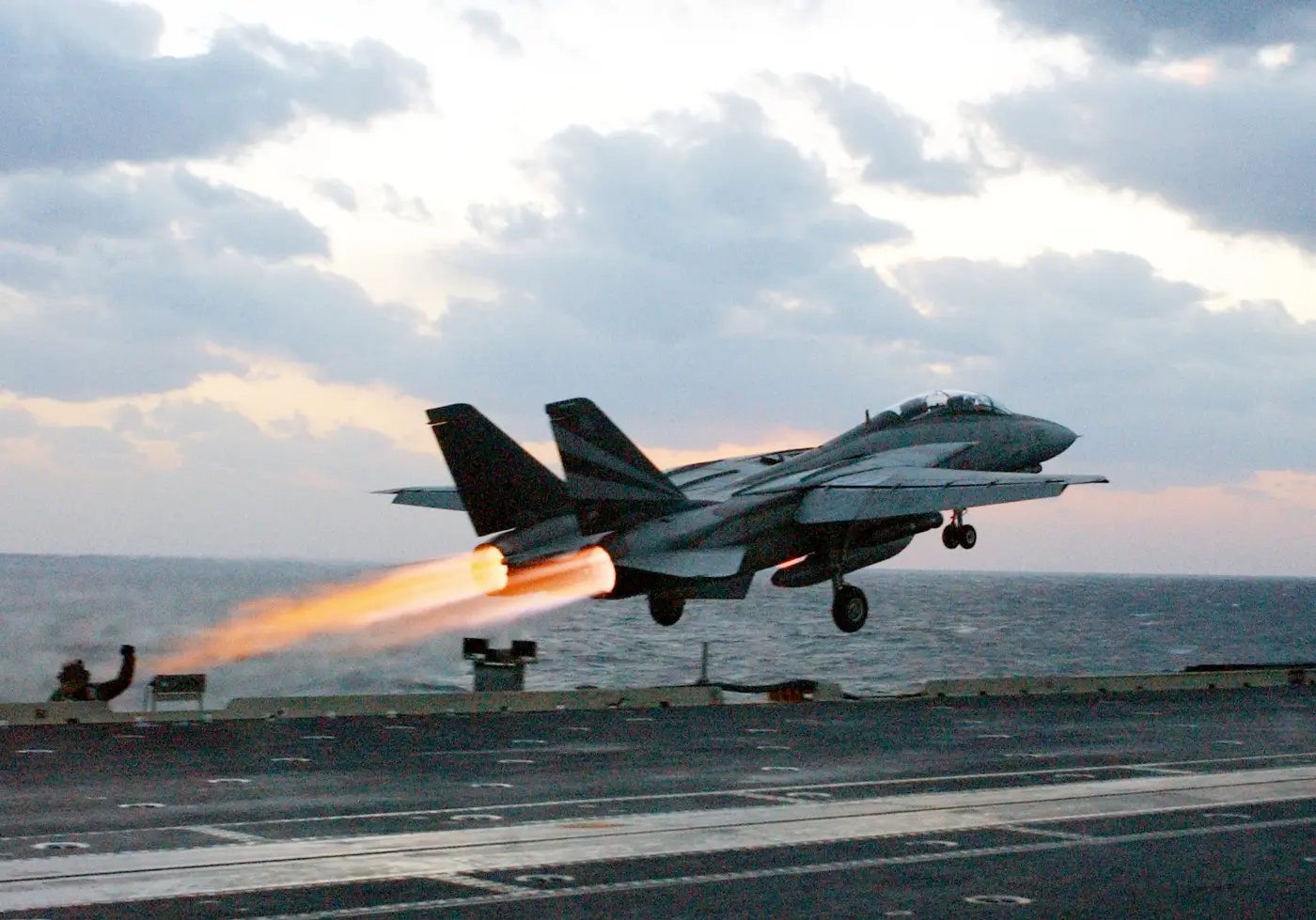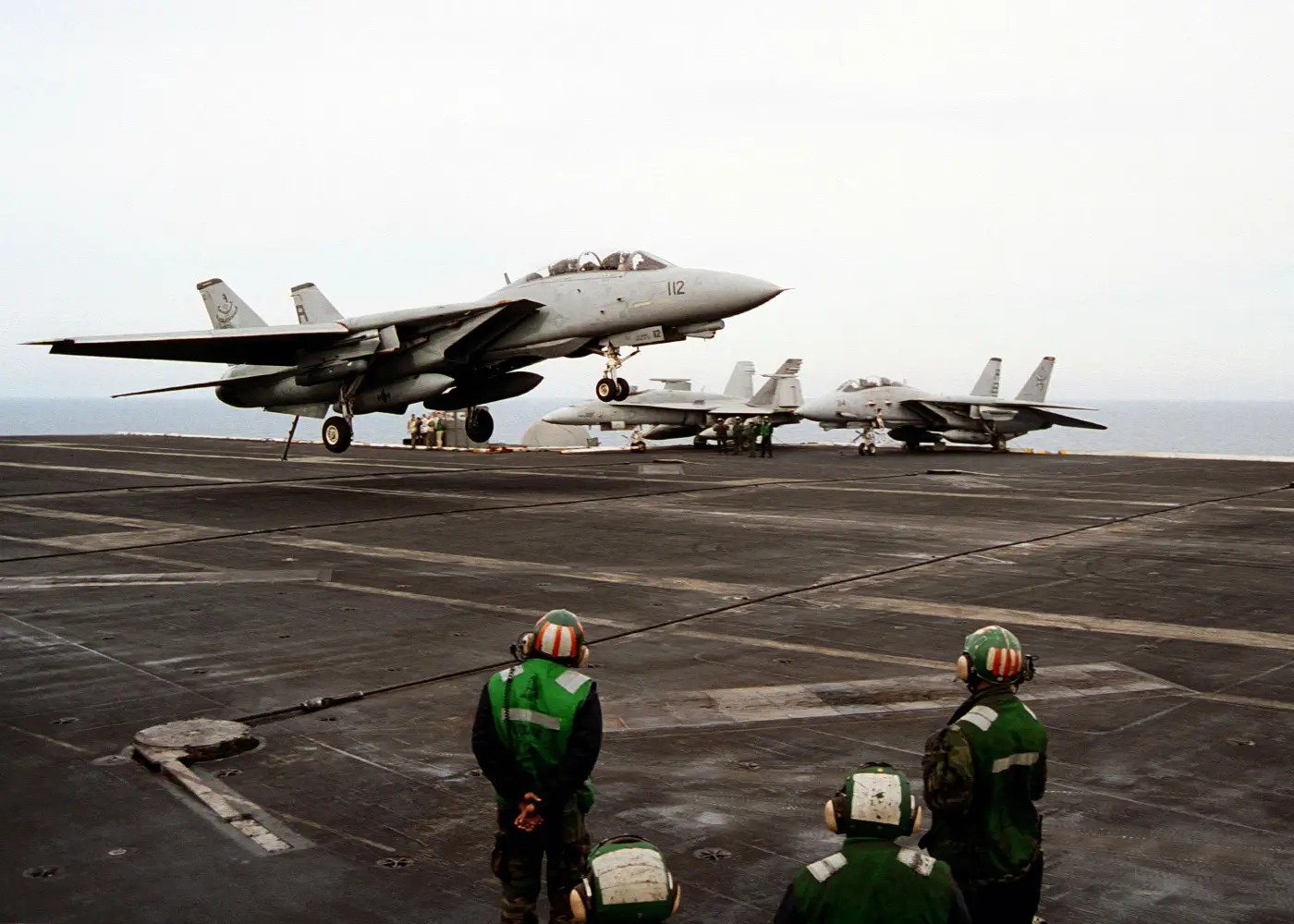
What Is the Top Speed of the F-14 Tomcat?
The F-14 Tomcat was the primary fighter for the US Navy. High speeds are critical for air fighters and can determine the mission's outcome. We examine the F-14s top speed.
Table of Contents
Through the 1986 movie Top Gun, the Grumman F-14 Tomcat became an aviation icon to many people. For the US Navy, the aircraft was the backbone of maritime aviation and the primary tool for air superiority, defense, and reconnaissance.
For these essential tasks, the F-14 needed to be fast. Getting to the action quickly is critical for air fighters and can determine the mission's outcome. Maneuvering in dogfighting also requires excess power and high speed.
We examine the F-14s top speed and how it achieves it.
About the F-14 Tomcat
The Grumman F-14 Tomcat is an American two-seater, twin-engine fighter aircraft. Developed for the United States Navy, the F-14 Tomcat is capable of aircraft carrier deployment and can reach supersonic speeds.
A unique feature of the F-14 is its characteristic variable-sweep wing configuration. Its wings can swing automatically during the flight and adapts to different situations. When the aircraft needs to fly at high speeds, the onboard computers automatically sweep the wings back, improving aerodynamics and reducing drag. For lower speeds, the wings move forward. The angle the F-14 Tomcat can sweep its wings is between 20° and 68° in flight. A Central Air Data Computer controls the wing sweep and keeps it in an optimum lift-to-drag ratio at all times. If needed, the pilot can override the system.

The Grumman F-14 is a product of the Vietnam War. Grumman and the Navy designed it based on air combat experiences against MiG fighters during the Vietnam War, and the F-14 is the first fighter to be based on such knowledge. In Vietnam, the McDonnell Douglas F-4 Phantom II proved to be lacking adequate maneuverability to win engagements. The US Navy launched the VFAX program to study new fighter aircraft designs to remedy this issue. Later the Navy dropped the VFAX program in favor of the VFX program, which ultimately emerged as the Grumman F-14 Tomcat, and Grumman was awarded the contract in January 1969.
Between 1969 and 1991, when the production stopped, Grumman built 712 F-14s. The first flight happened on 21 December 1970, just 22 months after Grumman was awarded the contract. The F-14 was first deployed in 1974 when it began replacing the F-4 Phantom II in US Navy service aboard the USS Enterprise.
When it entered service, the F-14 Tomcat had no ground-attack capabilities. However, in the 1990s, Grumman and the Navy installed equipment and upgraded systems to enable these missions.
What is the F-14 Top Speed?
The high speed of the F-14 is primarily due to the aircraft's two engines. The F-14 features two General Electric F110-GE-400 afterburning turbofans. Each engine delivers 23.400 pounds of force (104 kN) with afterburner at sea level. Earlier variants of the F-14 had another engine equipped called the Pratt & Whitney TF30, but it suffered from reliability issues.

So why do the F-14 Tomcat and other jet fighters need these high speeds? First, when the F-14 is needed somewhere, it needs to get there fast. Speed is essential when engaging enemy fighters or cutting off enemy bombers before reaching their target. Secondly, fighter aircraft need high amounts of energy for close fighting. Tight turns and steep climbs slow down the aircraft. Having powerful engines counteract these energy losses and leaves the pilot with more options.
An Underpowered and Unreliable Engine
As mentioned above, the first F-14s Tomcat came equipped with two Pratt & Whitney TF30 turbofan engines. When the aircraft entered service with the United States Navy in 1973, the TF30 powered the F-14.
However, the F-14 Tomcat and TF30 engine was not the best match. With the TF30, the F-14 Tomcat was underpowered, and its thrust-to-weight ratio was similar to the F-4 Phantom II it was meant to replace. In addition, the TF30 was prone to compressor stalls in certain situations, making it unreliable and dangerous.
But by the end of the 1970s, the Department of Defence began a replacement program following the numerous problems with the TF30 turbofans. Some F-14s had an improved version of the TF30 installed, while some later variants received the better General Electric F110-GE-400 in 1987.
Is the F-14 Tomcat Still In Service?
The Grumman F-14 Tomcat is no longer in service with the Navy and was replaced by the Boeing F/A-18E/F Super Hornet on 22 September 2006. The F-14 served as the Navy's principal air superiority fighter, fleet defense aircraft, and reconnaissance platform until it was retired.

Although the F-14 Tomcat was retired from the US Navy in 2006, the aircraft is still in operation today. The F-14 is still in use by Iran's Air Force.
Conclusion
The Grumman F-14 Tomcat is a twin-engine fighter aircraft developed for the United States Navy. The F-14 Tomcat can be deployed from a carrier, travel at supersonic speeds, and features a unique variable-sweep wing design.
Being a fighter jet, the F-14 Tomcat must be able to fly at high speeds. Getting to the action fast is vital. In dogfighting, maneuvering also necessitates a lot of force and speed. The F-14 top speed is Mach 2.34 (1.544 mph, 2.485 km/h) at 40.000 feet.
The Grumman F-14 Tomcat is no longer in service with the Navy, but the Iranian Air Force still uses it.
The F-14 is indeed fast, but it is no match for the iconic Lockheed SR-71 Blackbird. Read more below.

Planenerd Newsletter
Join the newsletter to receive the latest updates in your inbox.







